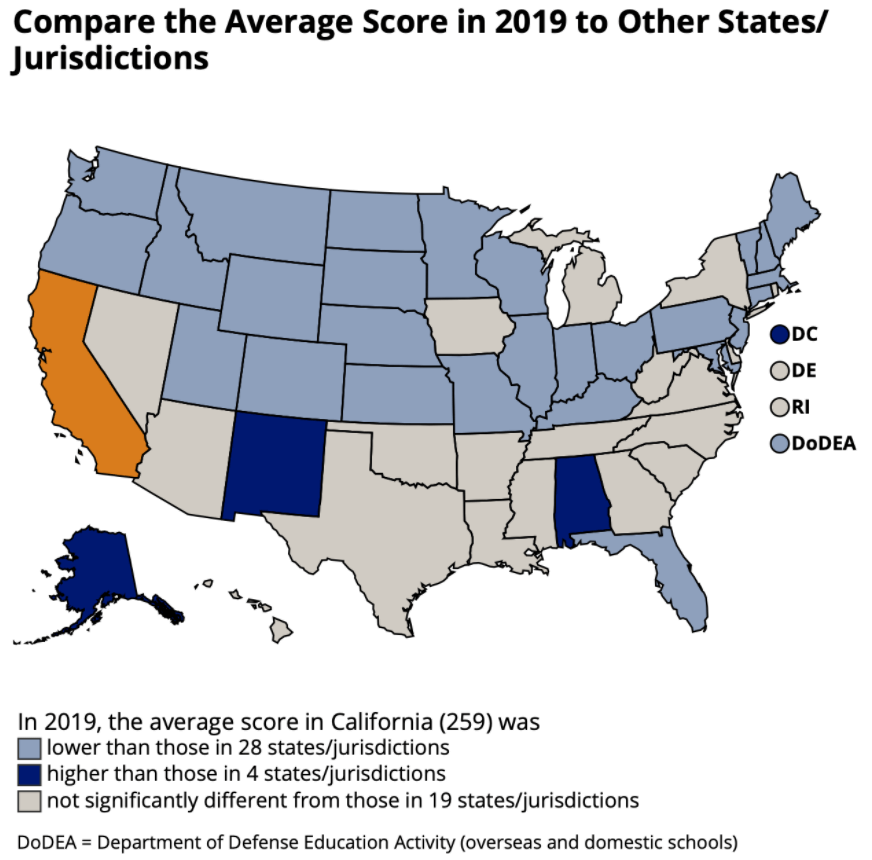When students can read, they can fly

Can a 15 minute screening test help kids read?
Our education system has some basic expectations about reading. Up to about grade two, students learn to read. From grade three onward, they read to learn.
The stakes of this transition are very high. When kids can read, they can fly. Students that aren’t reading by third grade can be left behind very quickly.
When kids can read, they can fly.
At some point, young students who struggle with reading realize that they are behind, often with complicated feelings about it. They may feel pressured, and respond in unhelpful ways. They may want to reject reading as uninteresting or “not their thing.” They may try to avoid reading by acting out. They may hide their difficulties, concealing weak reading skills or dyslexia with clever guessing skills. Or they might just clam up. To get every student flight-ready, teachers and parents have to address underlying issues.
The why of standardized testing
The stakes of literacy are high not just for individual students, but for society as a whole. As we explain in Ed100 Lesson 6.1, the education system is organized around a set of grade-level standards for each area of learning. These standards define our shared expectations about what students should generally know and be able to do at each grade level.
The development of these standards was a triumph of educational leadership at a massive scale — they enable educators to align their work so that students can advance from one grade to the next, one reading level to the next, one educator to the next, and even one school to the next.
Society has an interest in student success
It all works very well — except when it doesn’t. Teachers at each grade level mostly focus on the curriculum for their grade level. When a student falls behind, catching up is really, really hard. Society has an interest in an education system that handles these transitions and notices achievement gaps before they grow. That’s one reason why students are required to participate in some standardized tests.
The big tests
As described in Ed100 Lesson 1.1, two important tests provide information about how well students read.
- The Nation's Report Card (NAEP) assesses a statistically meaningful sample of students in every state to allow comparison of acheivement over time. In each state, it tests students in the 4th, 8th, and 12th grade.
- The California Assessment of Student Performance and Progress (CAASPP) assesses students in grades 3-11 annually in California schools.
NAEP and CAASPP measure proficiency differently, but both show that California kids have consistently lagged the national averages in reading proficiency. (Informal school reports suggest that many students fell further behind during the pandemic.)
|
Percentage of students “not proficient” in reading, 2019 |
|||
|---|---|---|---|
|
As measured by NAEP |
As measured by CAASPP |
||
|
4th grade |
67% |
4th grade |
51% |
|
8th grade |
70% |
8th grade |
51% |

Focusing earlier
When a child in third grade can’t read proficiently, it’s not a surprise — or at least it shouldn’t be. Falling behind happens gradually. There’s time to notice it. Learning to read takes time and practice. Helping children get ready to read should begin well before kindergarten, with games and practice to master letters and sounds. At the right age, it’s great fun.
In The Case for Kindergarten Tests, a thought-provoking article for Education Next, Mike Petrelli argues that national and state education systems should focus more effort on early grades, and that learning assessments should begin much earlier.
“Learning assessments should begin much earlier”
“Most kids in this country are starting their education at age three or four, yet we don’t test them until age nine or until the 4th grade,” Petrilli writes. “That’s a long time for policymakers and researchers to be left in the dark about what’s going on and what students may or may not be learning.”
Petrilli is quick to clarify that it would be silly to imagine this as a proposal to inflict old-fashioned bubble tests on kindergarten kids. A decent kindergarten assessment, he says, would be playful, designed on a phone or tablet, and capable of delivering insights quickly. (Hear him explain more on episode #795 of the Education Gadfly podcast.)
Universal screening for risk of dyslexia
Many parents complain that the education system seems designed to wait until children fail rather than identifying student needs early and providing timely support. How do teachers know what kinds of support students need? That’s what universal screening can provide.
“One of the greatest contributing factors to lower achievement scores in reading is the lack of early and accurate identification of students with dyslexia,” according to The California Dyslexia Guidelines.
Nearly all states require universal screening for risk of dyslexia, so that educators can take early steps to support children who might need extra help. California is one of the exceptions.
California’s guidelines recommend that all students be screened for the risk of dyslexia, but don’t presently require it. In 2022, a bill (SB 237 - Portantino) aims to change that. If passed, every school that serves students in kindergarten through second grade would have to screen all pupils for risk of dyslexia and provide support. Because there are many inexpensive or free screening tools available, the authors argue that this would be a low-cost mandate.
Reading advocates, including Decoding Dyslexia CA, list SB 237 as a high priority: “Without universal screening for signs of dyslexia, many students are never identified as being at risk and consequentially, never get the intervention they need to become literate.”
Governor Newsom, who is very public about the challenges he faced as a student with dyslexia, is among the most vocal advocates for addressing dyslexia at scale. The topic sparks a lot of interest and concern, and also a lot of misunderstanding.
There is some resistance to implementing universal risk screening, possibly because it sounds expensive. At least some of the opposition springs from misunderstanding. A full professional assessment for eligibility for special education is a time-consuming process that typically requires a psychologist with specialized training. Risk screening, by contrast, is quick and can be done by a classroom teacher in about 15 minutes, depending on the screening tool used.
Other reading-related legislation
Governor Newsom’s budget proposes substantial funding for expert literacy coaching, one-on-one tutoring with highly skilled reading specialists, access to multilingual libraries, and resources for identification of learning disabilities in the state’s preschool assessment tools. Other legislation, supported by Superintendent of Public Instruction Thurmond and the California Department of Education, proposes additional investments:
|
Some reading-related bills in 2022 |
|
|---|---|
|
AB 2465 (Bonta) |
Would fund home visits to help families reach literacy goals. |
|
SB 952 (Limon) |
Would help existing schools convert to dual language immersion programs. |
|
AB 2498 (Bonta) |
Would support Freedom School programs (Afrocentric literacy programs to help students improve reading.) |
How is your school doing?
- What percent of students are proficient in reading at each grade level? Use Ed Data to find out.
- Does your school use universal screening to identify children at risk of dyslexia? Ask your principal.
- Does your school use a curriculum that incorporates the science of reading? According to EdWeek, The Most Popular Reading Programs Aren’t Backed by Science.
- Are your teachers using updated reading strategies incorporating the latest science about how children learn to read? Ask your principal. If not, what is the school doing to provide teachers with the training they need?
- Does your school provide timely support for struggling readers? Ask parents.
Tags on this post
Early childhood Kindergarten Reading Special ed Assessment DyslexiaAll Tags
A-G requirements Absences Accountability Accreditation Achievement gap Administrators After school Algebra API Arts Assessment At-risk students Attendance Beacon links Bilingual education Bonds Brain Brown Act Budgets Bullying Burbank Business Career Carol Dweck Categorical funds Catholic schools Certification CHAMP Change Character Education Chart Charter schools Civics Class size CMOs Collective bargaining College Common core Community schools Contest Continuous Improvement Cost of education Counselors Creativity Crossword CSBA CTA Dashboard Data Dialogue District boundaries Districts Diversity Drawing DREAM Act Dyslexia EACH Early childhood Economic growth EdPrezi EdSource EdTech Education foundations Effort Election English learners Equity ESSA Ethnic studies Ethnic studies Evaluation rubric Expanded Learning Facilities Fake News Federal Federal policy Funding Gifted Graduation rates Grit Health Help Wanted History Home schools Homeless students Homework Hours of opportunity Humanities Independence Day Indignation Infrastructure Initiatives International Jargon Khan Academy Kindergarten LCAP LCFF Leaderboard Leadership Learning Litigation Lobbyists Local control Local funding Local governance Lottery Magnet schools Map Math Media Mental Health Mindfulness Mindset Myth Myths NAEP National comparisons NCLB Nutrition Pandemic Parcel taxes Parent Engagement Parent Leader Guide Parents peanut butter Pedagogy Pensions personalized Philanthropy PISA Planning Policy Politics population Poverty Preschool Prezi Private schools Prize Project-based learning Prop 13 Prop 98 Property taxes PTA Purpose of education puzzle Quality Race Rating Schools Reading Recruiting teachers Reform Religious education Religious schools Research Retaining teachers Rigor School board School choice School Climate School Closures Science Serrano vs Priest Sex Ed Site Map Sleep Social-emotional learning Song Special ed Spending SPSA Standards Strike STRS Student motivation Student voice Success Suicide Summer Superintendent Suspensions Talent Teacher pay Teacher shortage Teachers Technology Technology in education Template Test scores Tests Time in school Time on task Trump Undocumented Unions Universal education Vaccination Values Vaping Video Volunteering Volunteers Vote Vouchers Winners Year in ReviewSharing is caring!
Password Reset
Search all lesson and blog content here.
Login with Email
We will send your Login Link to your email
address. Click on the link and you will be
logged into Ed100. No more passwords to
remember!














Questions & Comments
To comment or reply, please sign in .
Carol Kocivar March 15, 2022 at 10:21 pm
30 minutes and you’ll be on your way!